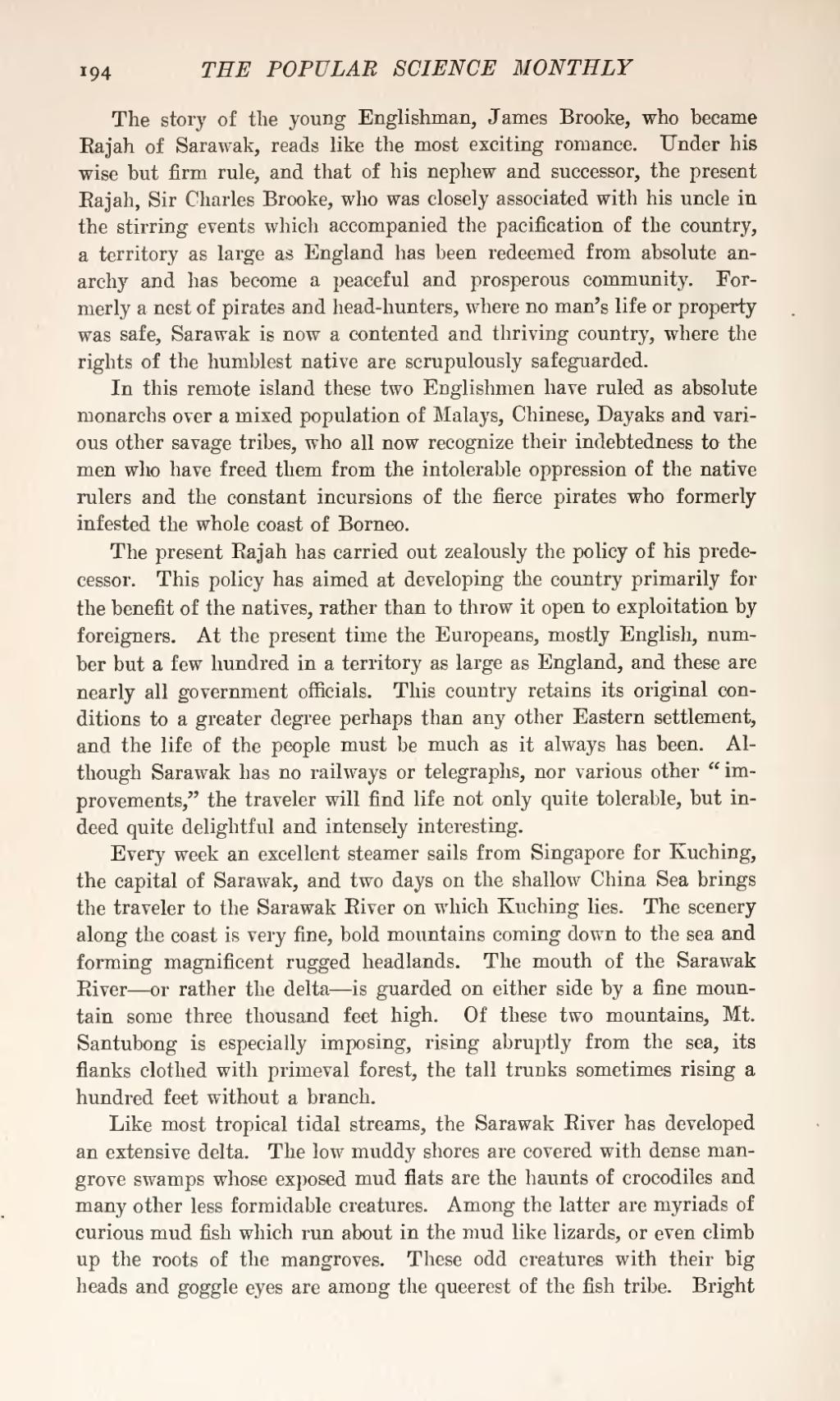The story of the young Englishman, James Brooke, who became Rajah of Sarawak, reads like the most exciting romance. Under his wise but firm rule, and that of his nephew and successor, the present Rajah, Sir Charles Brooke, who was closely associated with his uncle in the stirring events which accompanied the pacification of the country, a territory as large as England has been redeemed from absolute anarchy and has become a peaceful and prosperous community. Formerly a nest of pirates and head-hunters, where no man's life or property was safe, Sarawak is now a contented and thriving country where the rights of the humblest native are scrupulously safeguarded.
In this remote island these two Englishmen have ruled as absolute monarchs over a mixed population of Malays, Chinese, Dayaks and various other savage tribes, who all now recognize their indebtedness to the men who have freed them from the intolerable oppression of the native rulers and the constant incursions of the fierce pirates who formerly infested the whole coast of Borneo.
The present Rajah has carried out zealously the policy of his predecessor. This policy has aimed at developing the country primarily for the benefit of the natives, rather than to throw it open to exploitation by foreigners. At the present time the Europeans, mostly English, number but a few hundred in a territory as large as England, and these are nearly all government officials. This country retains its original conditions to a greater degree perhaps than any other Eastern settlement, and the life of the people must be much as it always has been. Although Sarawak has no railways or telegraphs, nor various other "improvements," the traveler will find life not only quite tolerable, but indeed quite delightful and intensely interesting.
Every week an excellent steamer sails from Singapore for Kuching, the capital of Sarawak, and two days on the shallow China Sea brings the traveler to the Sarawak River on which Kuching lies. The scenery along the coast is very fine, bold mountains coming down to the sea and forming magnificent rugged headlands. The mouth of the Sarawak River—or rather the delta—is guarded on either side by a fine mountain some three thousand feet high. Of these two mountains, Mt. Santubong is especially imposing, rising abruptly from the sea, its flanks clothed with primeval forest, the tall trunks sometimes rising a hundred feet without a branch.
Like most tropical tidal streams, the Sarawak River has developed an extensive delta. The low muddy shores are covered with dense mangrove swamps whose exposed mud flats are the haunts of crocodiles and many other less formidable creatures. Among the latter are myriads of curious mud fish which run about in the mud like lizards, or even climb up the roots of the mangroves. These odd creatures with their big heads and goggle eyes are among the queerest of the fish tribe. Bright

